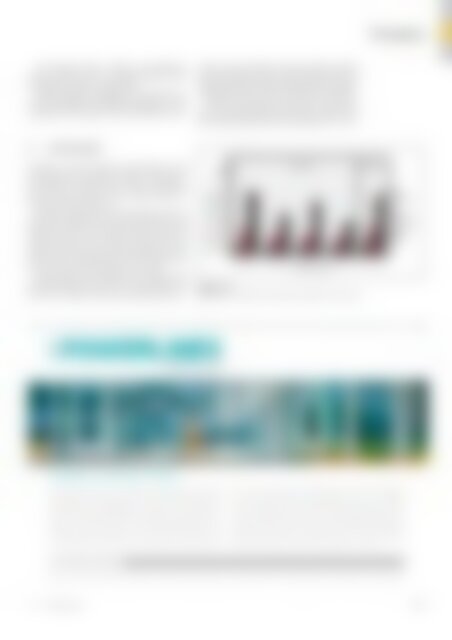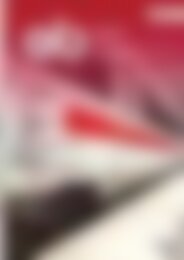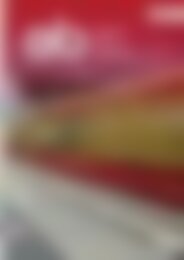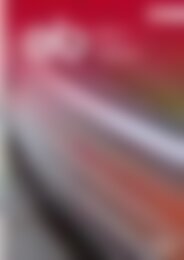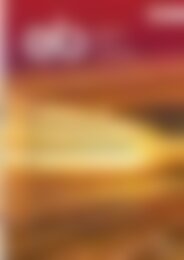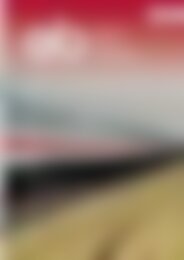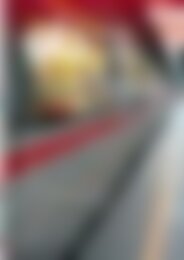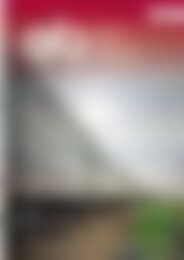eb - Elektrische Bahnen Bahnenergieversorgungssystem der DB erneut bestätigt (Vorschau)
Erfolgreiche ePaper selbst erstellen
Machen Sie aus Ihren PDF Publikationen ein blätterbares Flipbook mit unserer einzigartigen Google optimierten e-Paper Software.
Pantographs<br />
The program shown in Table 1 was applied for<br />
various materials, plain or impregnated up to 35 %<br />
in weight of copper or copper alloy.<br />
At that last step of the project, the test duration increased<br />
to 4 000 km or 290 000 strip passages, in or<strong>der</strong><br />
to guarantee the stability of the measured wear rates.<br />
Looking at a map of hardness and resistivity of the<br />
strip materials, the domains of plain and impregnated<br />
carbons are clearly distinct. Thus, it was expected<br />
that wear processes may strongly depend on<br />
these parameters (Figure 13).<br />
However, assessment of all experiments done at<br />
Polimi and Hoffmann test rigs show the clear result<br />
that the wear of all tested materials plain carbon and<br />
metalized carbon up to a copper content of 35 % in<br />
weight is of the same or<strong>der</strong> of magnitude for equal<br />
test conditions. Moreover, plain and metalized carbon<br />
show a similar distribution of wear rates.<br />
Some efforts were un<strong>der</strong>taken to identify those<br />
material parameters that have a major influence on<br />
wear rates. Typical contact strip parameters like resistivity,<br />
surface hardness, flexural strength, material<br />
density and finally copper content showed within the<br />
range of parameters of the tested materials no significant<br />
impact on wear rates of contact wires and strips.<br />
Within the framework of this study no clear parameter<br />
could be identified except the correlation with<br />
the number and intensity of arcs (Figures 14 to 16).<br />
4 Final results<br />
wear rate of wire related to<br />
contact strip passages<br />
3<br />
mm²<br />
→106<br />
2<br />
1<br />
0<br />
180 km/h 200km/h<br />
B plain C imp 35% A plain A imp 25% A imp 25%<br />
Carbon material<br />
Figure 17:<br />
Wear of wires for different strip materials at different rates of arcing.<br />
blue<br />
sections<br />
red<br />
sections<br />
(u


